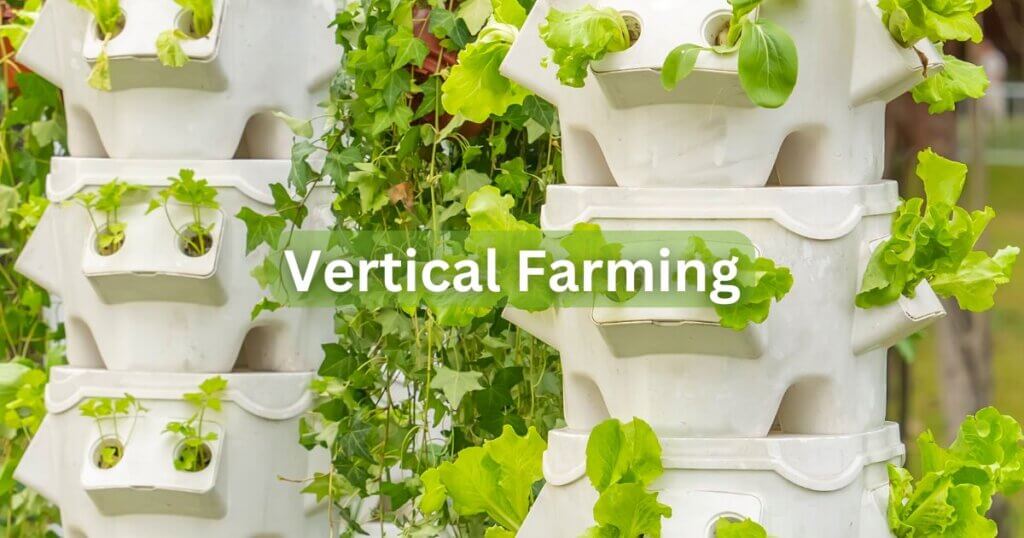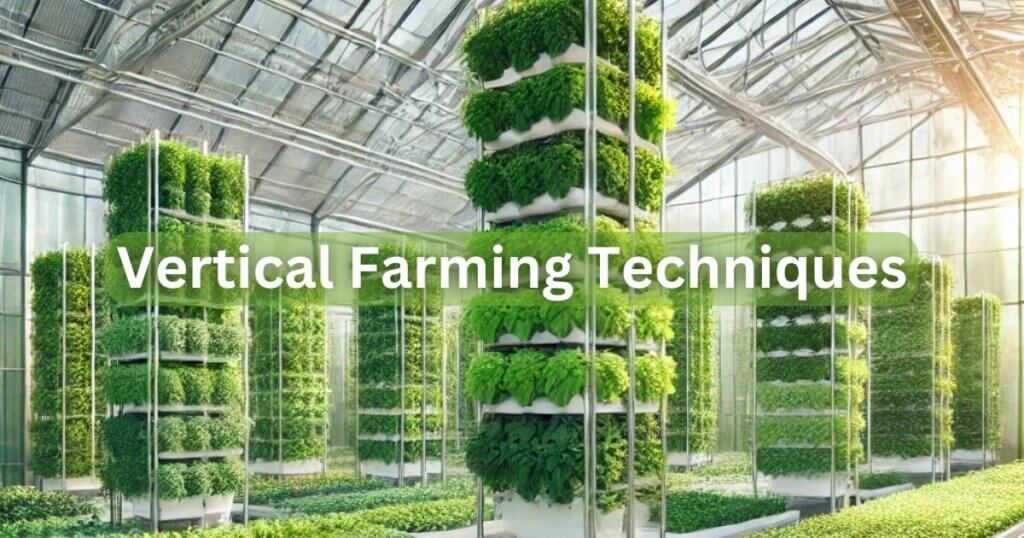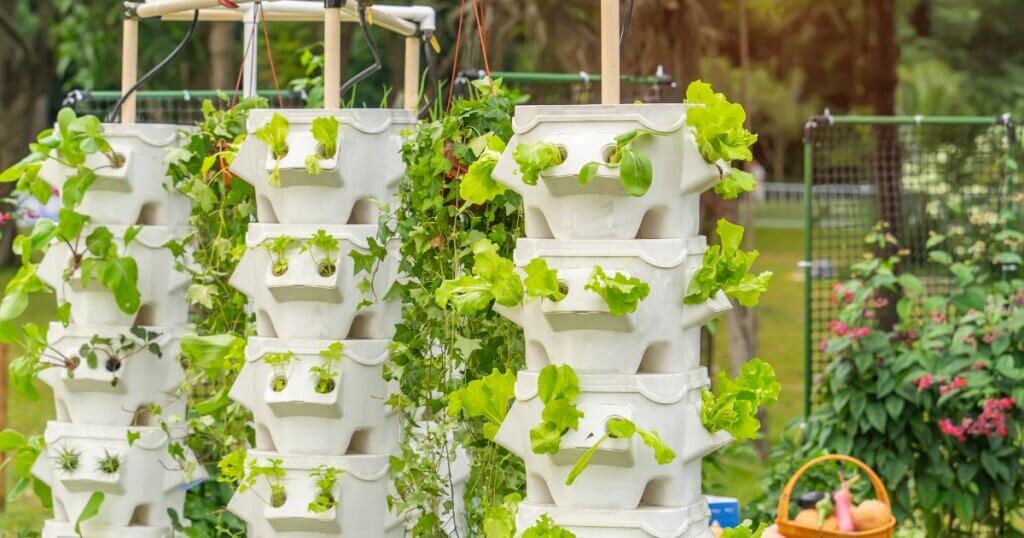Vertical Farming Revolution: Unleashing Full Potential for a Sustainable Future

Some of the links in this post are affiliate links. As an Amazon Associate, we earn a referral fee from qualifying purchases—at no extra cost to you.
Vertical farming is revolutionizing the agricultural industry, providing a sustainable solution to the challenges of traditional farming methods. By utilizing advanced technologies and innovative cultivation techniques, vertical farming maximizes space efficiency, minimizes resource consumption, and offers a year-round crop production system. In this article, we will delve into the concept of vertical farming, explore its benefits, and discuss its potential to reshape the future of agriculture.
Table of Contents
What is Vertical Farming?
Vertical farming is a cutting-edge agricultural practice that involves growing crops in vertically stacked layers, often within controlled environments such as warehouses or high-rise buildings. This method employs hydroponics, aeroponics, or aquaponics systems, which allow plants to thrive without soil, using nutrient-rich water or mist. Vertical farms create optimal growing conditions tailored to each crop’s requirements by leveraging artificial lighting, climate control systems, and precise monitoring.
How Does Vertical Farming Work?
Vertical farming integrates various technological components to optimize plant growth and productivity. Here’s a breakdown of the key elements involved:
- Vertical Structures: Vertical farms utilize tall structures with multiple levels, maximizing available space. These structures are typically equipped with shelves, racks, or trays to accommodate the plants at different heights.
- Artificial Lighting: As natural sunlight may not be sufficient in indoor environments, vertical farms employ advanced LED lighting systems. These lights emit specific wavelengths tailored to each plant’s growth stage, ensuring optimal photosynthesis and accelerated growth.
- Climate Control: Precise temperature, humidity, and ventilation control systems create a controlled environment that mimics ideal growing conditions. This enables year-round cultivation without being affected by external weather conditions.
- Nutrient Delivery Systems: Vertical farming employs hydroponics, aeroponics, or aquaponics to provide plants with the necessary nutrients. Hydroponics circulates nutrient-rich water directly to the plant roots, while aeroponics delivers nutrients through a mist. Aquaponics combines hydroponics with fish farming, where fish waste is a plant nutrient source.
- Automation and Monitoring: Advanced sensors, IoT devices, and automation technologies monitor and adjust environmental factors such as light intensity, nutrient levels, and pH balance. This real-time data helps optimize plant growth and detect any issues promptly.
This full-spectrum VIPARSPECTRA LED Grow Light provides customizable light settings ideal for each stage of plant growth. It’s perfect for indoor and vertical farming setups, ensuring optimal photosynthesis and yield.
The Inkbird ITC-308 is a reliable digital temperature controller perfect for vertical farms. It automatically switches heating or cooling devices on and off, maintaining ideal growing temperatures in climate-controlled environments.
The VIVOSUN Hydroponic Grow Kit provides a complete hydroponic system for beginners and pros. It simplifies nutrient delivery in vertical farming setups, supporting healthy root development and faster plant growth.
The Govee WiFi Thermo-Hygrometer allows farmers to monitor temperature and humidity remotely via app alerts, supporting automation and data-driven growing decisions in vertical farms.
Benefits of Vertical Farming
Vertical farming offers numerous advantages, making it an attractive and sustainable alternative to traditional agriculture. Let’s explore some of its key benefits:
1. Maximizing Space Efficiency
Vertical farming optimizes land use by utilizing vertical space effectively. Vertical farms can produce significantly higher yields per square foot with crops grown in stacked layers than traditional farming methods. This is particularly advantageous in urban areas or regions with limited arable land, where space is scarce.
2. Conserving Natural Resources
Vertical farming minimizes resource consumption by implementing efficient systems. Here’s how it achieves resource conservation:
- Water Efficiency: Hydroponic and aeroponic systems used in vertical farming require up to 90% less water than traditional soil-based agriculture. By recycling and reusing water, vertical farms substantially reduce water wastage.
- Energy Efficiency: Advanced LED lighting and climate control systems in vertical farms are designed to minimize energy consumption. With precise control over lighting, temperature, and ventilation, energy usage can be optimized to create ideal growing conditions while reducing overall energy requirements.
- Land Conservation: Vertical farming minimizes the need for large land areas by utilizing vertical space. This helps preserve natural habitats, protect biodiversity, and reduce deforestation associated with expanding agricultural land.
3. Year-Round Crop Production
Vertical farming enables year-round crop production independent of seasonal variations. By creating an artificially controlled environment, farmers can manipulate the growing conditions to provide optimal temperature, humidity, and lighting throughout the year. This ensures a consistent fresh produce supply and reduces dependence on imported or out-of-season crops.
4. Improved Crop Quality and Safety
The controlled environment in vertical farms allows farmers to monitor and regulate the growing conditions closely. By eliminating exposure to pests, diseases, and extreme weather events, vertical farming reduces the need for pesticides and other harmful chemicals. This leads to higher-quality, pesticide-free crops with enhanced nutritional value, offering consumers safer and healthier food options.
5. Local Food Production and Food Security
Vertical farming can enhance local food production and improve food security. Fresh produce can be grown and distributed locally by establishing vertical farms within urban areas or close to communities. This reduces the transportation distance and time from farm to table, minimizing carbon emissions associated with long-distance food transport. Additionally, vertical farming can mitigate the impact of climate change on food production, ensuring a more stable and reliable food supply.
6. Innovation and Technological Advancement
Vertical farming is at the forefront of agricultural innovation, driving technological advancements and sustainable farming practices. Integrating automation, data analytics, and IoT devices enables precise monitoring, efficient resource management, and data-driven decision-making. These technological advancements optimize crop production and pave the way for future agricultural innovations.
The Future of Vertical Farming
Vertical farming holds immense potential to revolutionize how we grow food and address the challenges of a rapidly changing world. As technology continues to evolve and become more accessible, vertical farming is poised to expand its reach and impact. Here are some areas where vertical farming is expected to make a significant difference:
1. Urban Agriculture and Food Deserts
Vertical farming can be vital in establishing urban agriculture initiatives in densely populated urban areas where access to fresh produce is limited. By bringing food production closer to the consumers, vertical farms can provide nutritious food options, reduce food deserts, and promote community resilience.
The AeroGarden Harvest is a compact, soil-free vertical garden ideal for urban dwellers. It fits easily into apartments and helps address urban food insecurity by enabling local, year-round herb and vegetable cultivation.
2. Climate-Resilient Farming
Vertical farming’s controlled environment shields crops from the unpredictable impacts of climate change. Extreme weather events, water scarcity, and temperature fluctuations can disrupt traditional agriculture. Vertical farms, on the other hand, offer a climate-resilient solution by providing a stable and controlled environment for crop growth, ensuring a consistent food supply despite external climatic challenges.
3. Sustainable Food Production
As the world grapples with the need for sustainable food systems, vertical farming offers a promising solution. By minimizing resource consumption, reducing carbon emissions, and conserving natural habitats, vertical farming aligns with the goals of sustainable agriculture. It presents an opportunity to meet the increasing global food demand while mitigating the environmental impacts associated with conventional agriculture.
4. Integration with Smart Cities
Vertical farming aligns well with the concept of smart cities, where technology is harnessed to enhance livability and sustainability. By integrating vertical farms into urban infrastructure, cities can create a closed-loop system where food waste can be recycled as nutrients for the plants, energy can be generated from organic waste, and vertical farming can contribute to the circular economy.
Conclusion
Vertical farming represents a groundbreaking approach to sustainable agriculture, combining advanced technologies, precise cultivation techniques, and efficient resource management. By unlocking the potential of vertical space and harnessing the power of controlled environments, vertical farming maximizes crop yields, conserves resources, and offers a resilient solution to the challenges faced by traditional farming methods. As we look to the future, vertical farming promises to transform our food systems, ensure food security, and foster a more sustainable and resilient world.
Other Useful Resources Related To Vertical Farming
- Vertical Farming – Wikipedia
A comprehensive overview of vertical farming, including its techniques (hydroponics, aeroponics, and aquaponics), benefits, and challenges.
Wikipedia – Vertical Farming - iFarm – AI-Powered Vertical Farming
iFarm develops software and hardware for vertical farms, automating crop management and improving efficiency.
Wikipedia – iFarm - AeroFarms – Leading Vertical Farming Company
AeroFarms is a pioneering company utilizing aeroponics to grow leafy greens indoors with minimal water and space.
Wikipedia – AeroFarms - How Vertical Farming is Saving Space, Water, and Emissions
This article from The Guardian explores how vertical farming is reducing land use, water consumption, and carbon emissions in agriculture.
The Guardian – Vertical Farming - World-First Vertical Farming Project by Intelligent Growth Solutions
A report on a large-scale vertical farming project in the UAE, aiming to reduce food imports and boost local production.
The Times – Vertical Farming
Some Interesting Vertical Farming Videos







